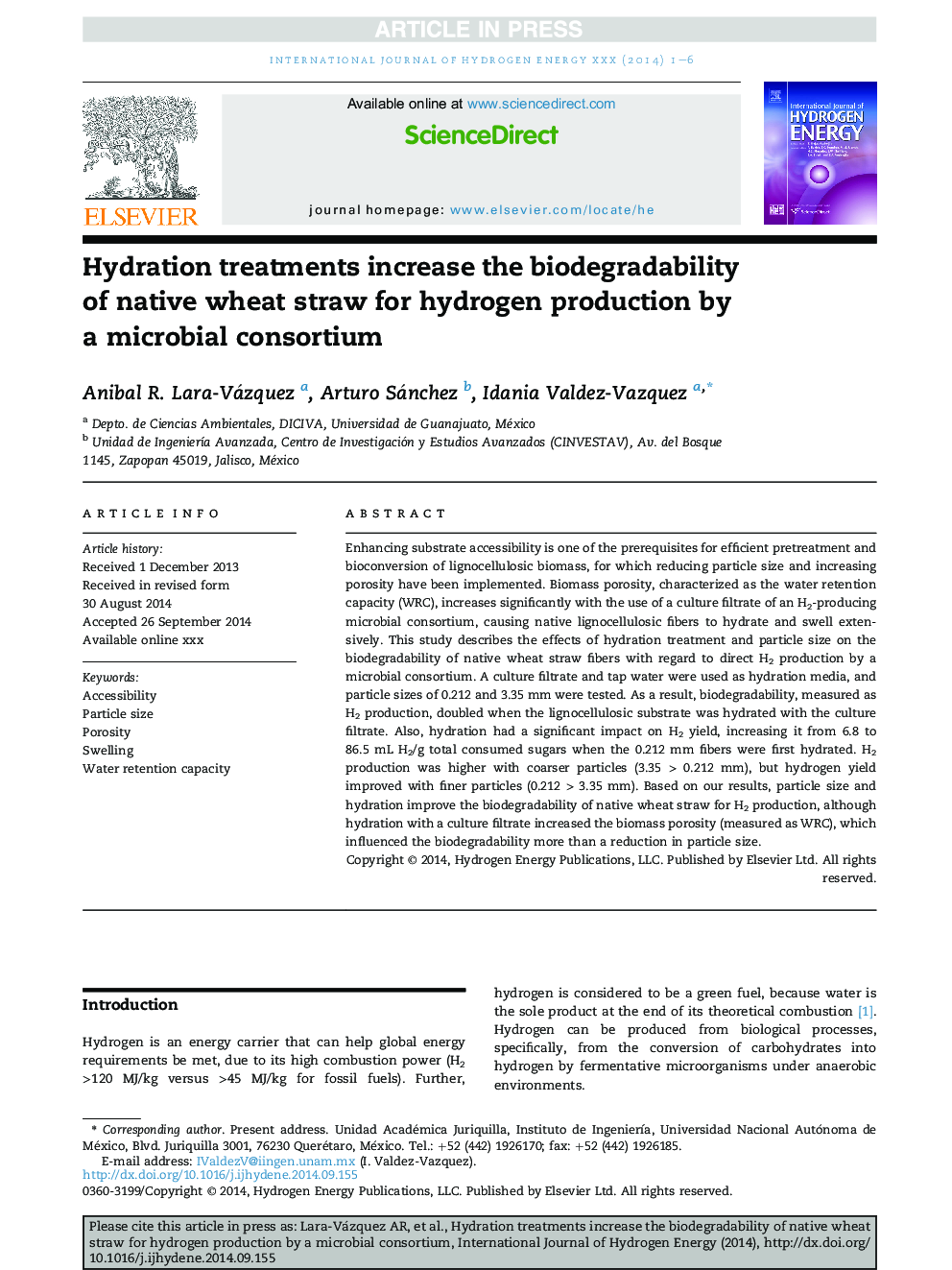| Article ID | Journal | Published Year | Pages | File Type |
|---|---|---|---|---|
| 7717157 | International Journal of Hydrogen Energy | 2014 | 6 Pages |
Abstract
Enhancing substrate accessibility is one of the prerequisites for efficient pretreatment and bioconversion of lignocellulosic biomass, for which reducing particle size and increasing porosity have been implemented. Biomass porosity, characterized as the water retention capacity (WRC), increases significantly with the use of a culture filtrate of an H2-producing microbial consortium, causing native lignocellulosic fibers to hydrate and swell extensively. This study describes the effects of hydration treatment and particle size on the biodegradability of native wheat straw fibers with regard to direct H2 production by a microbial consortium. A culture filtrate and tap water were used as hydration media, and particle sizes of 0.212 and 3.35Â mm were tested. As a result, biodegradability, measured as H2 production, doubled when the lignocellulosic substrate was hydrated with the culture filtrate. Also, hydration had a significant impact on H2 yield, increasing it from 6.8 to 86.5Â mLÂ H2/g total consumed sugars when the 0.212Â mm fibers were first hydrated. H2 production was higher with coarser particles (3.35Â >Â 0.212Â mm), but hydrogen yield improved with finer particles (0.212Â >Â 3.35Â mm). Based on our results, particle size and hydration improve the biodegradability of native wheat straw for H2 production, although hydration with a culture filtrate increased the biomass porosity (measured as WRC), which influenced the biodegradability more than a reduction in particle size.
Related Topics
Physical Sciences and Engineering
Chemistry
Electrochemistry
Authors
Anibal R. Lara-Vázquez, Arturo Sánchez, Idania Valdez-Vazquez,
